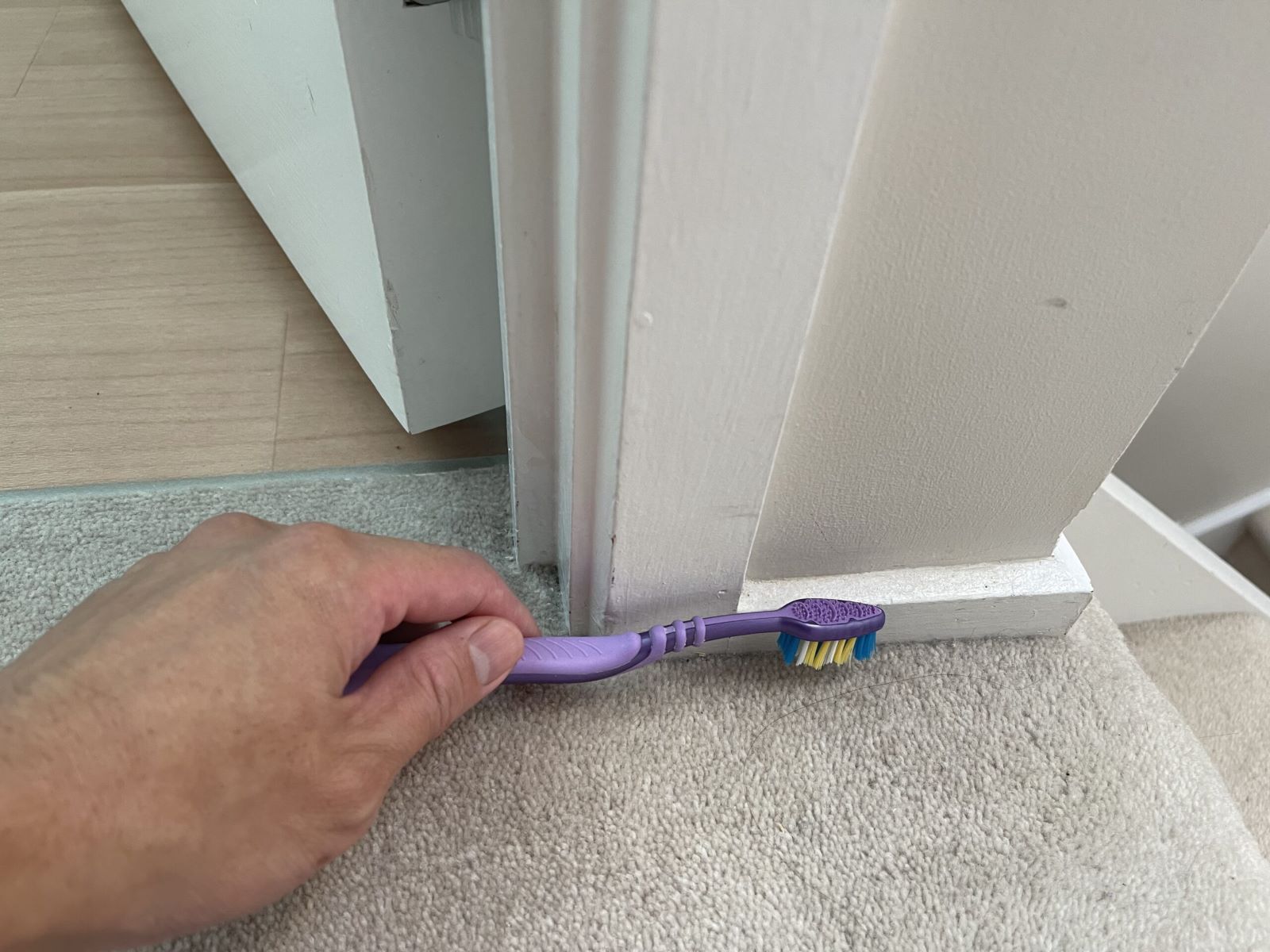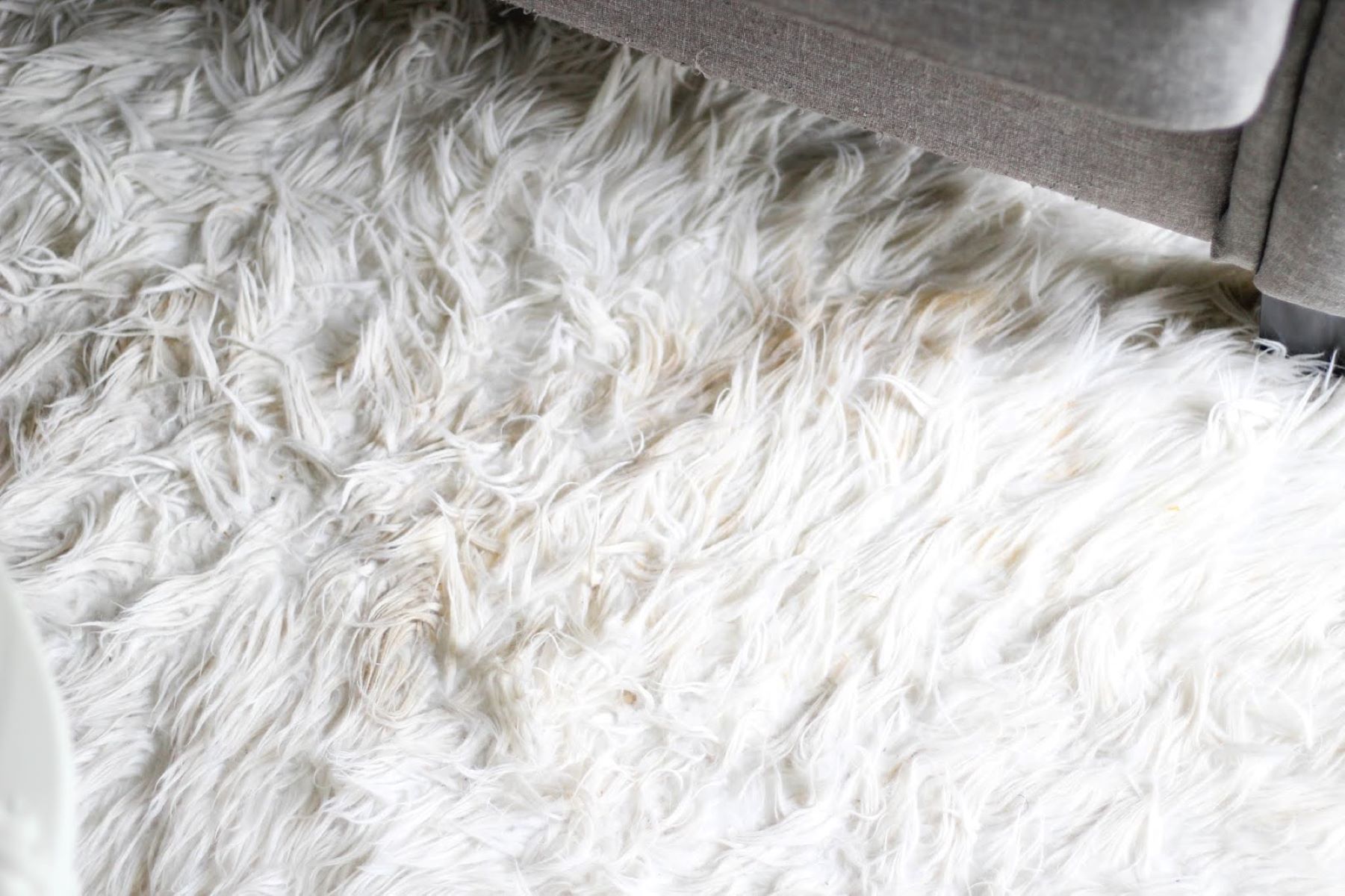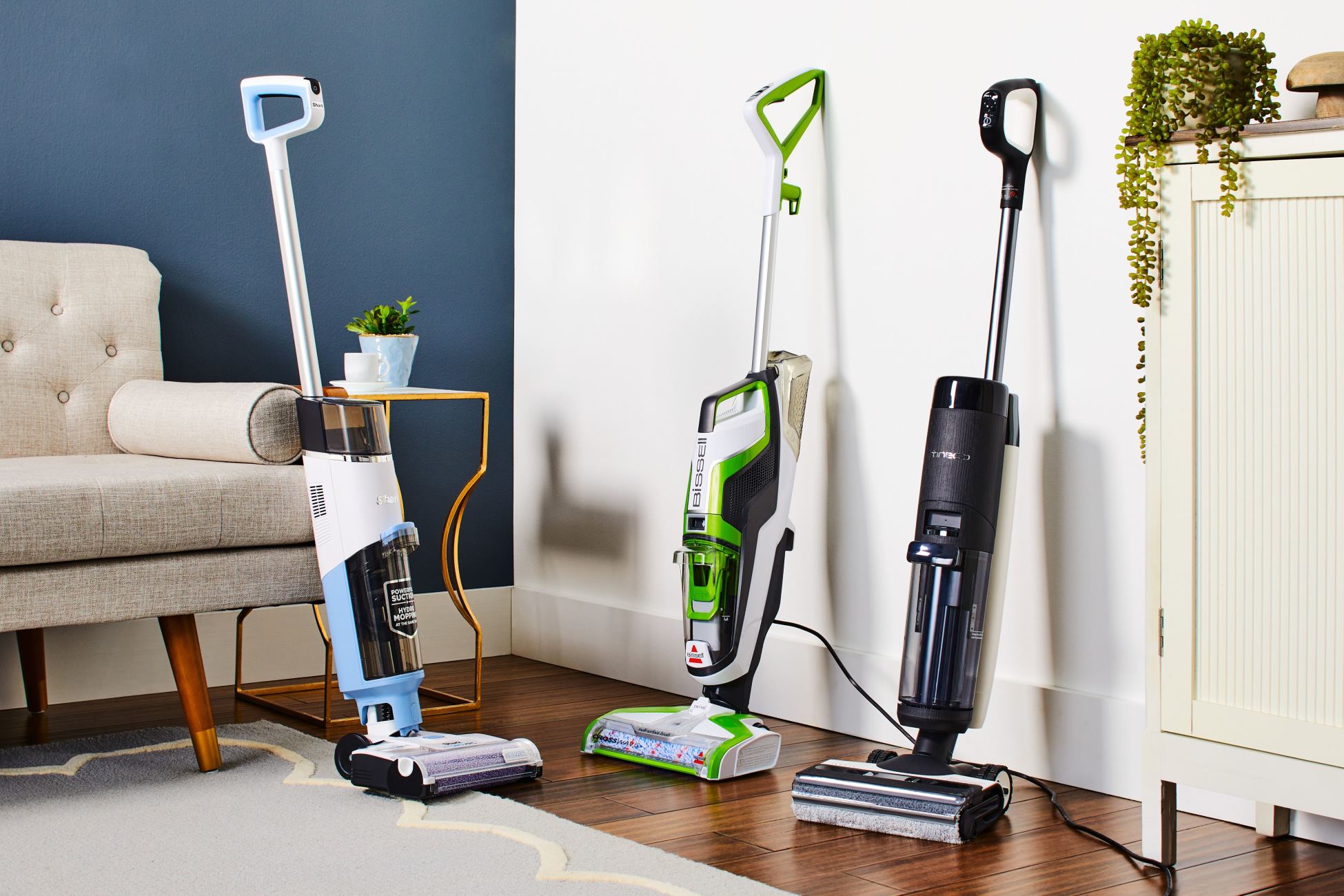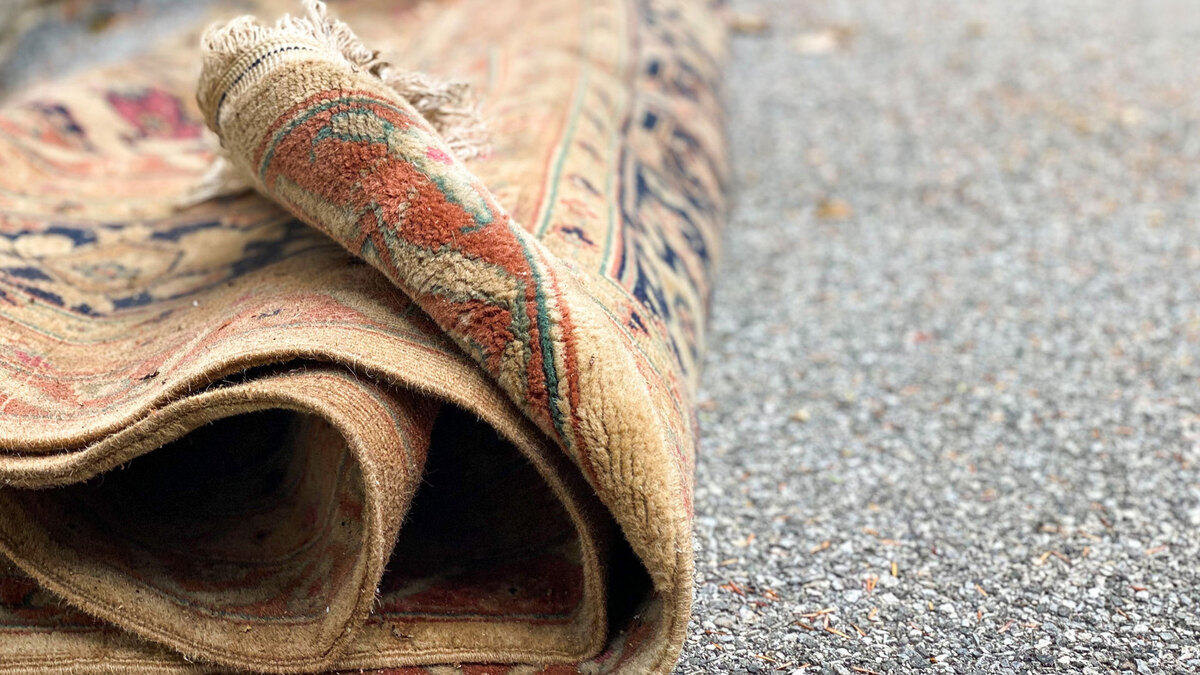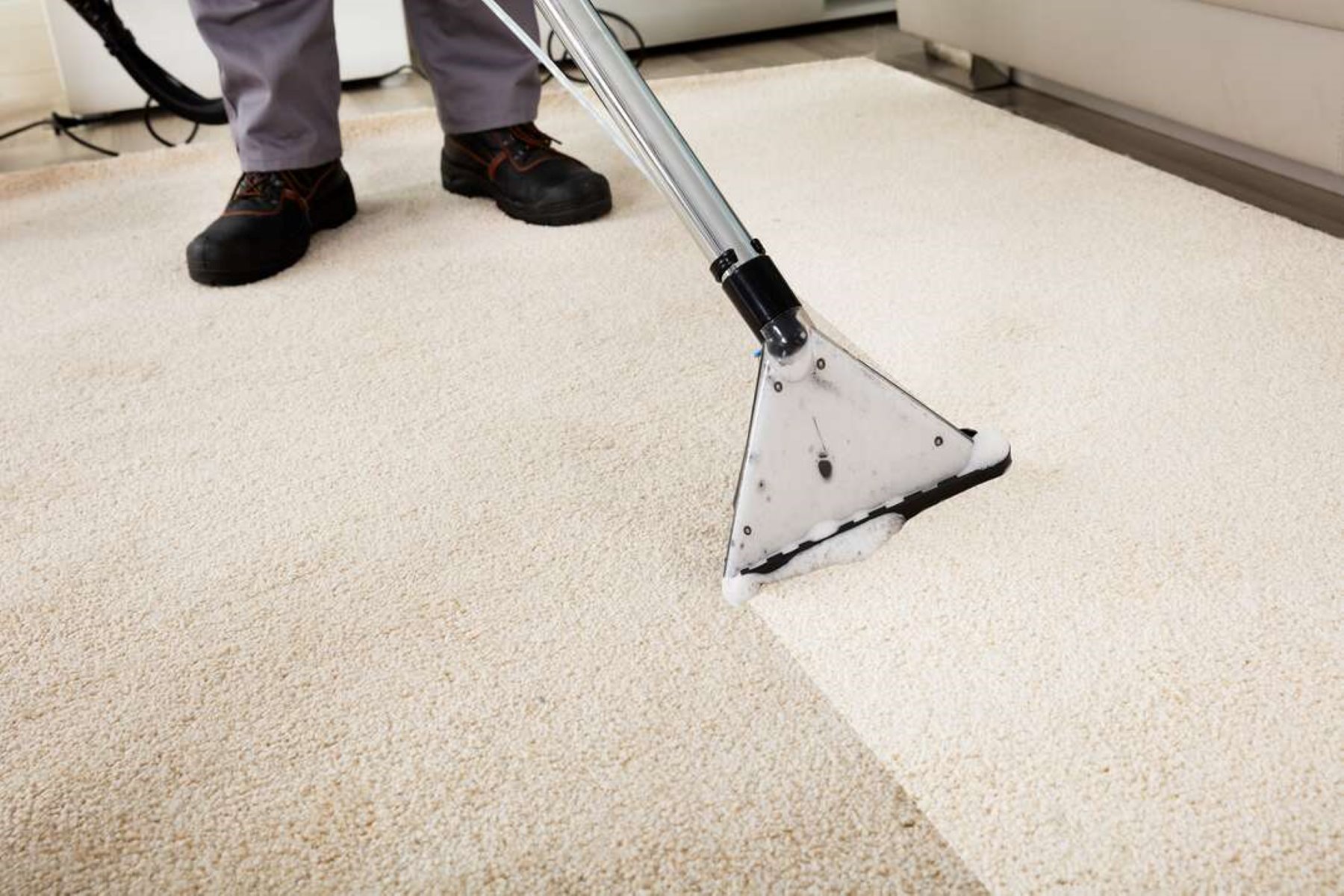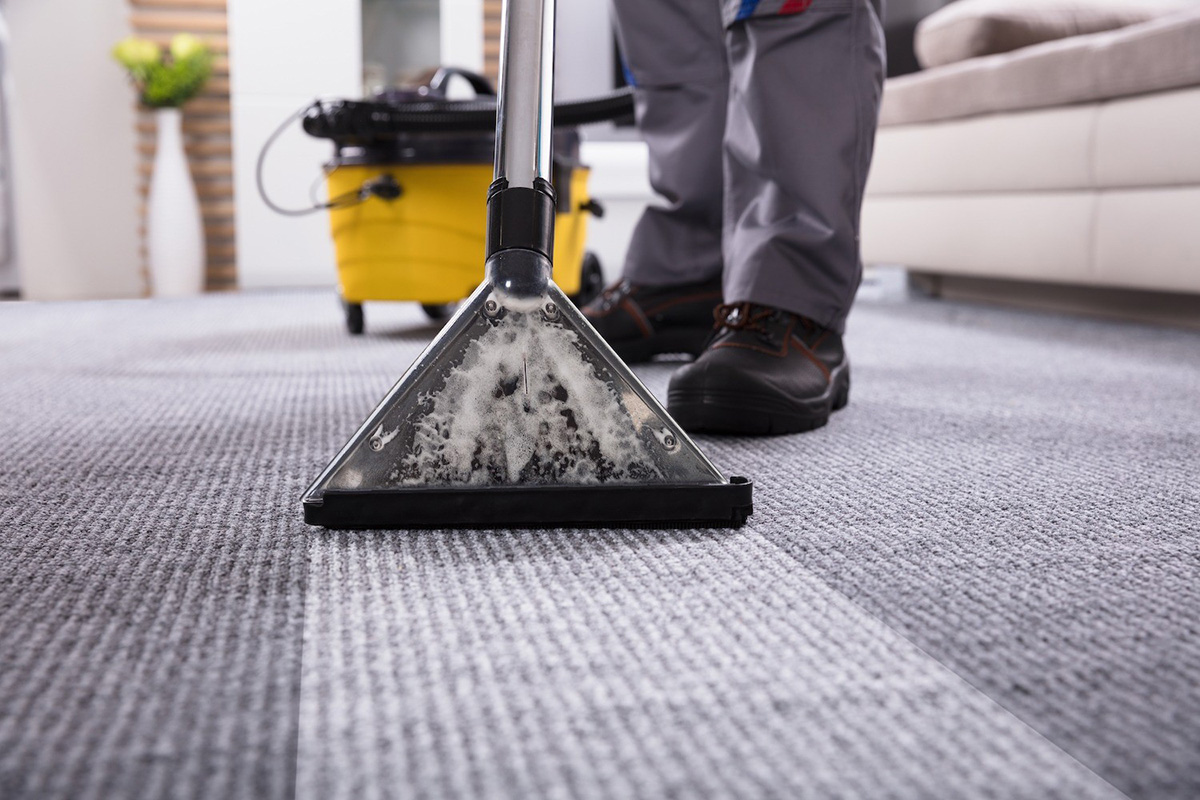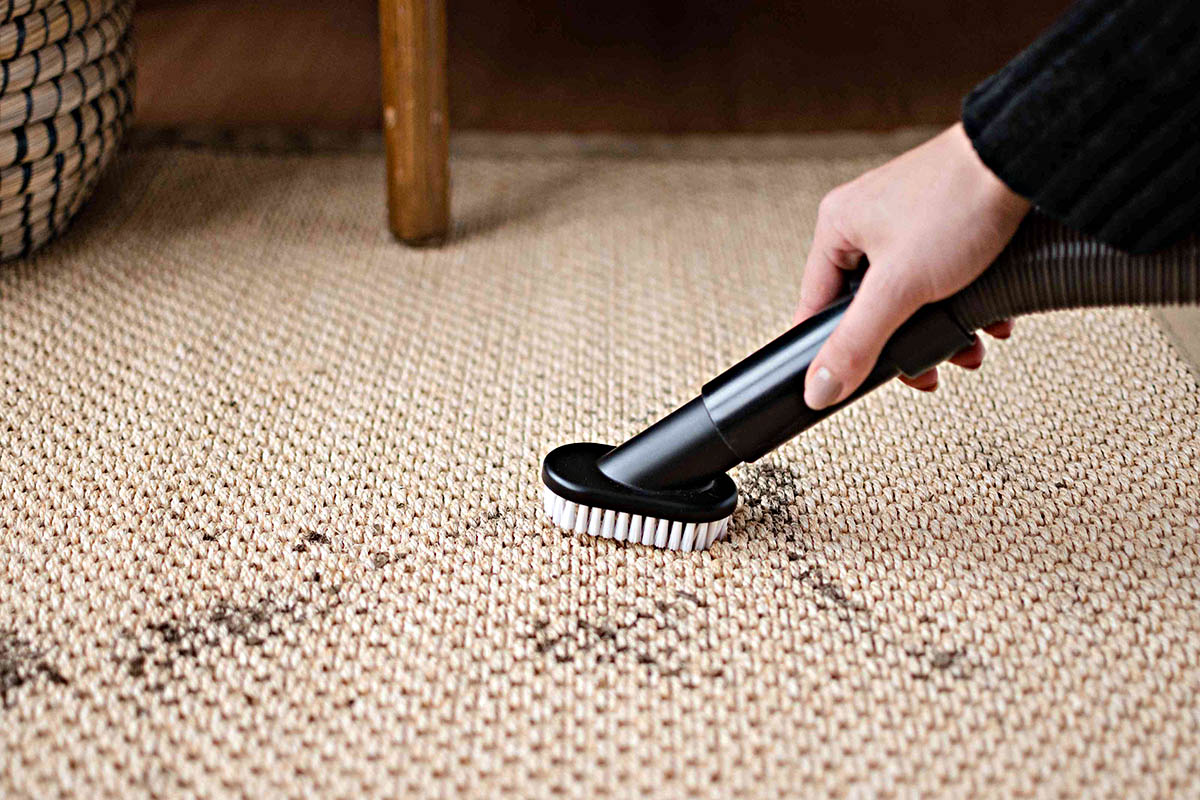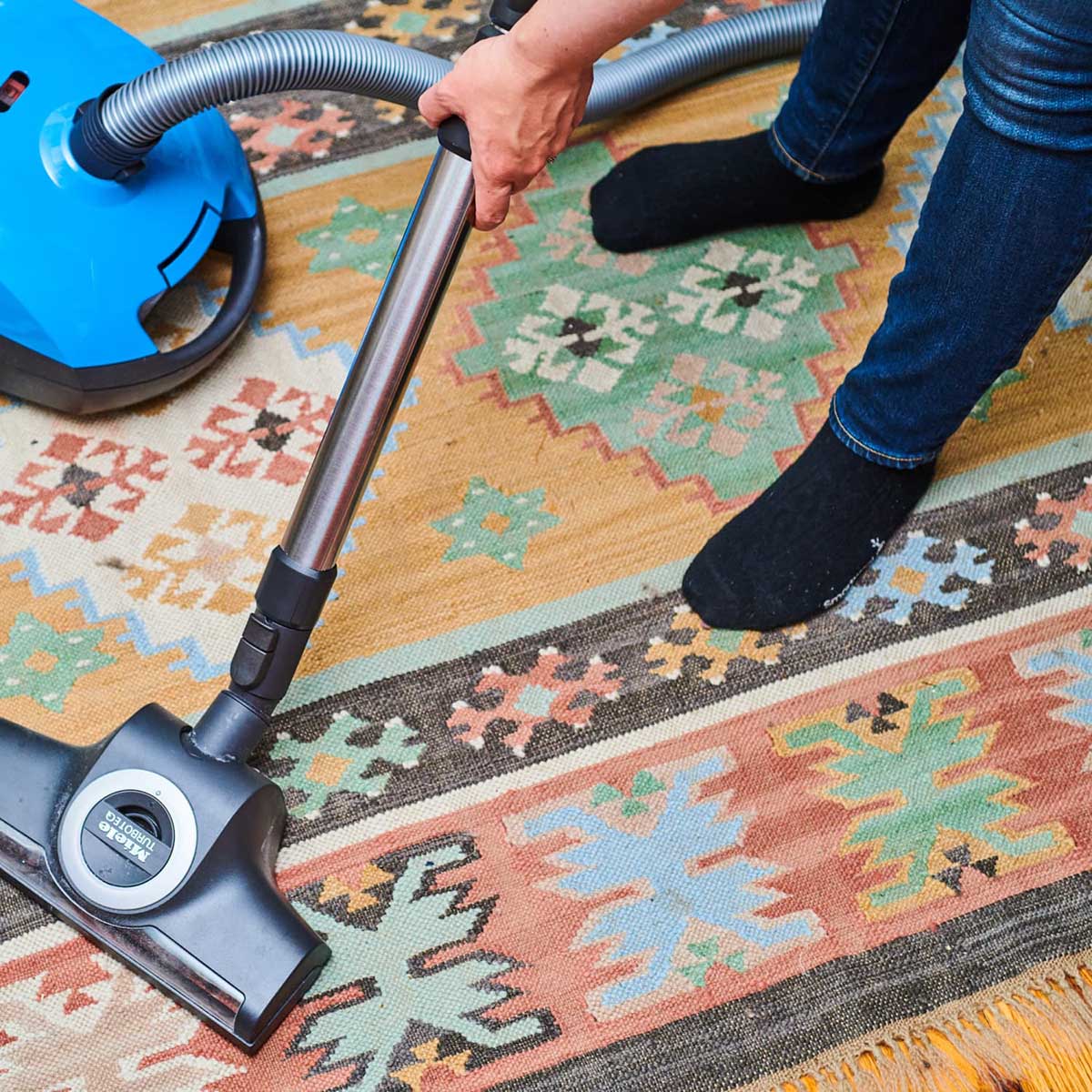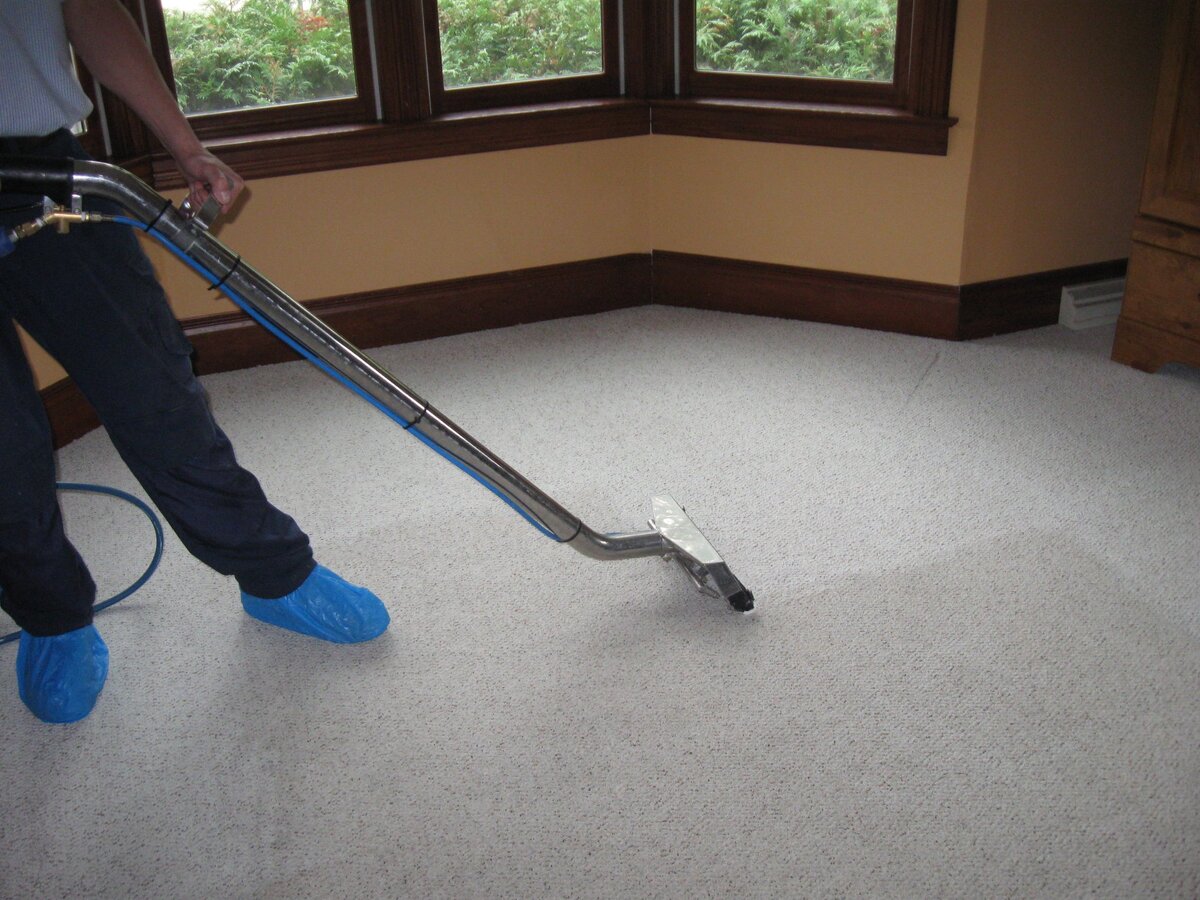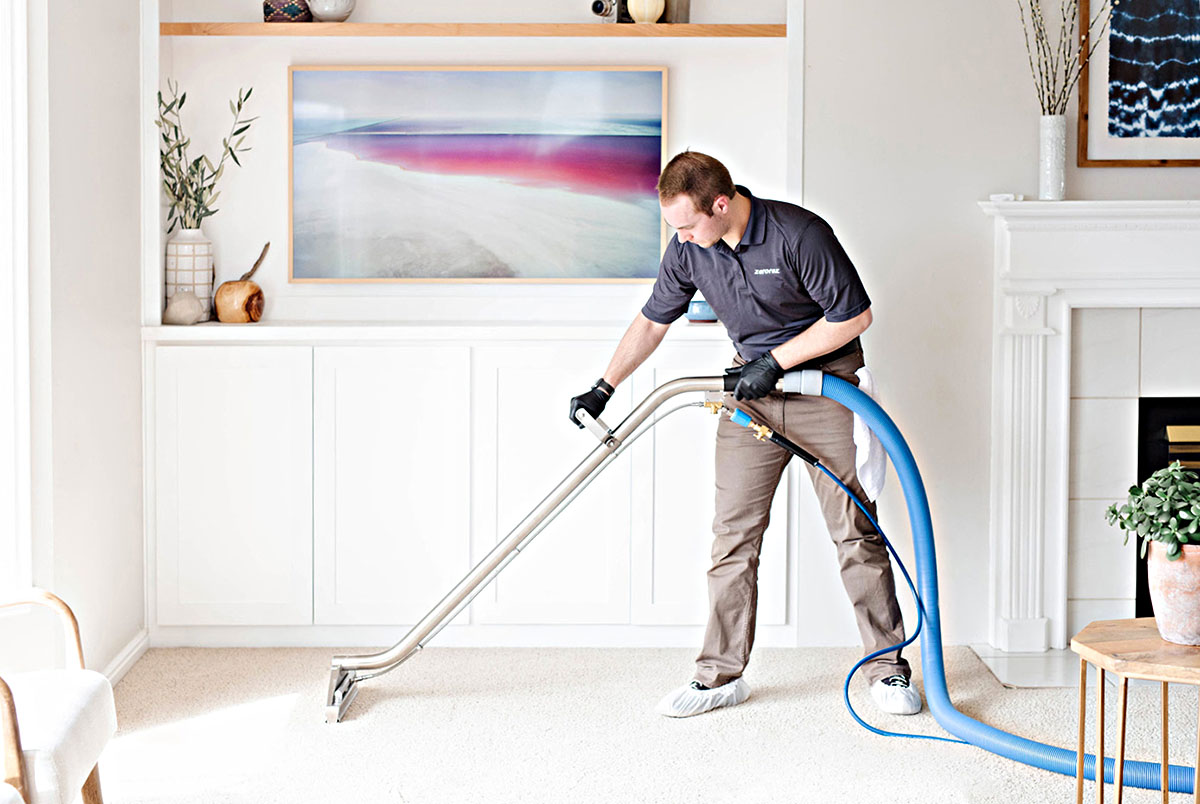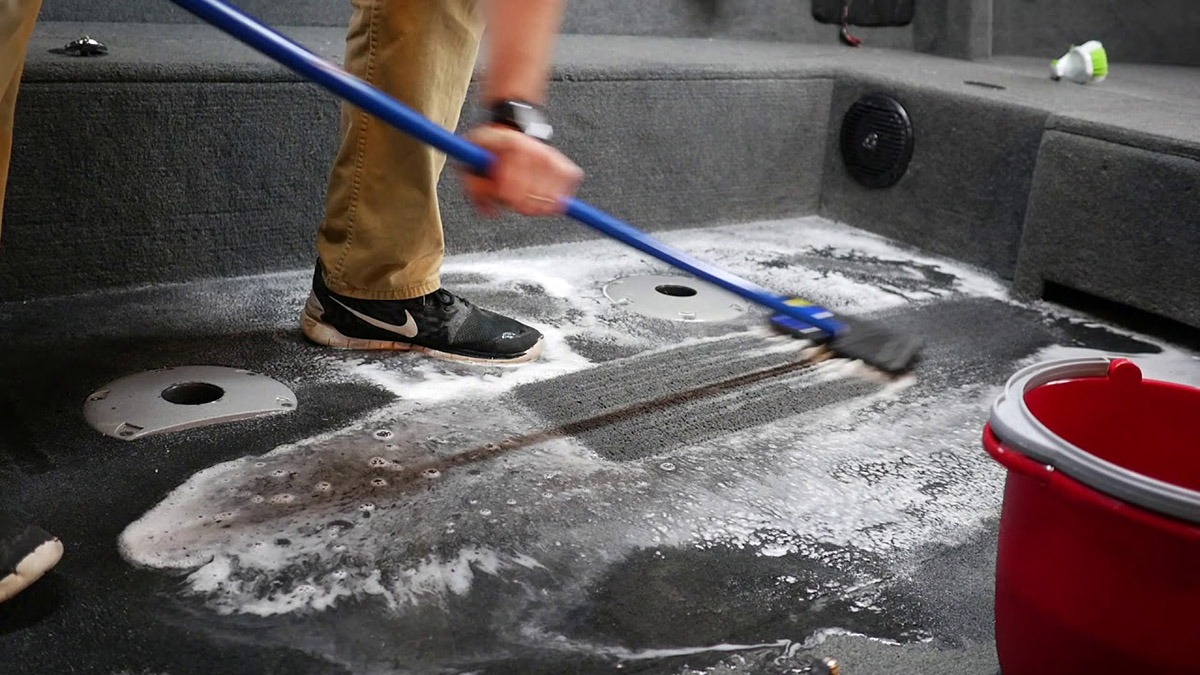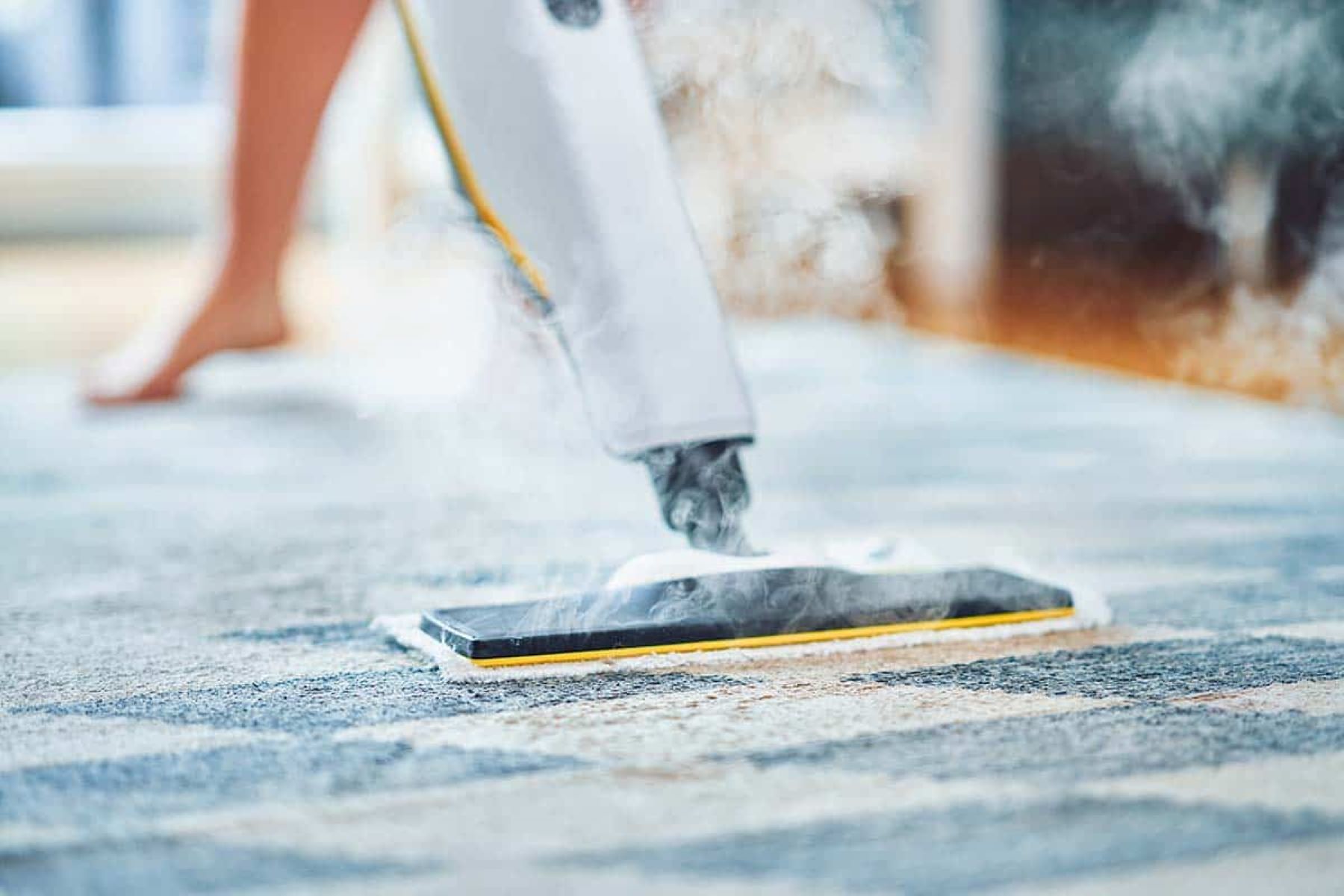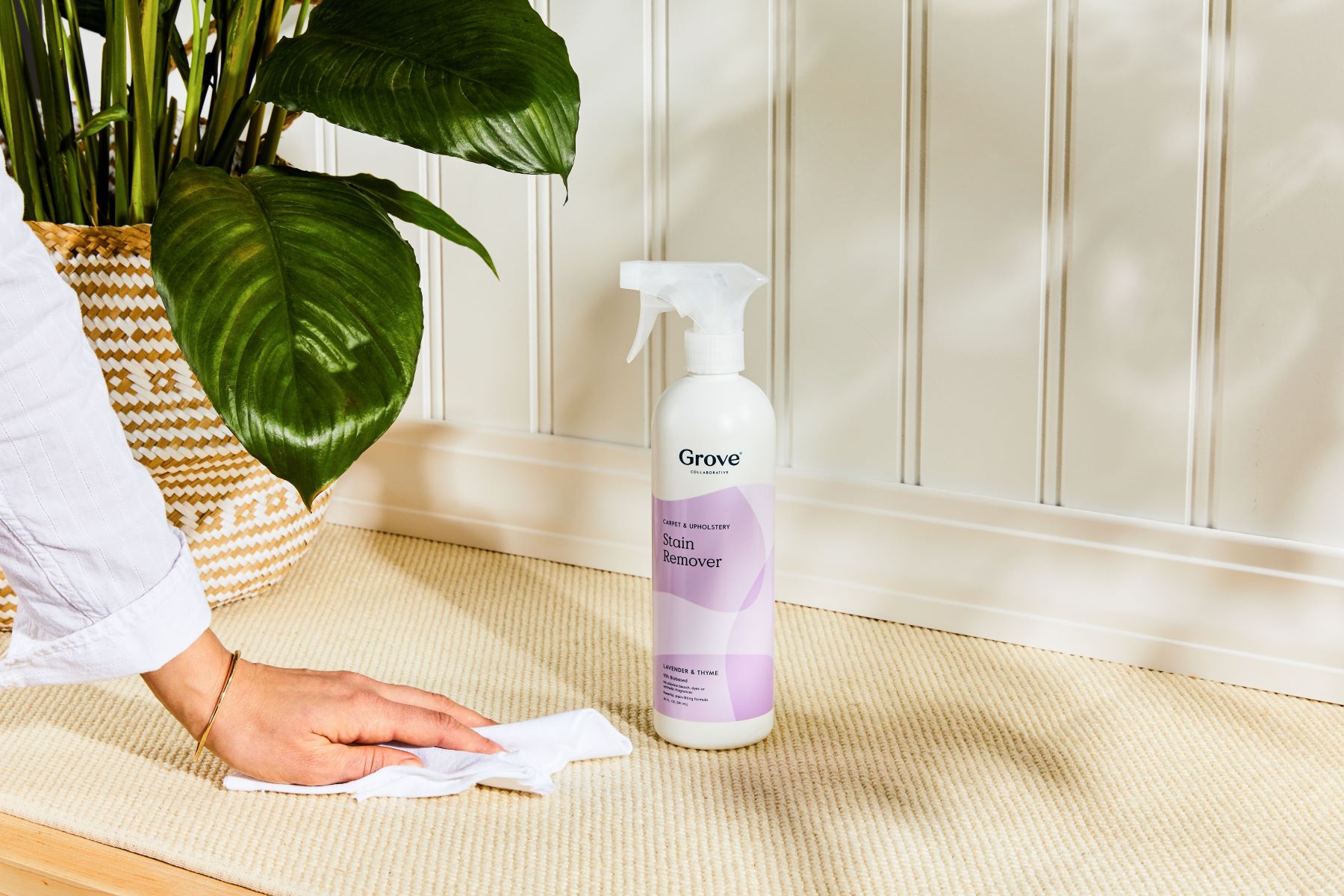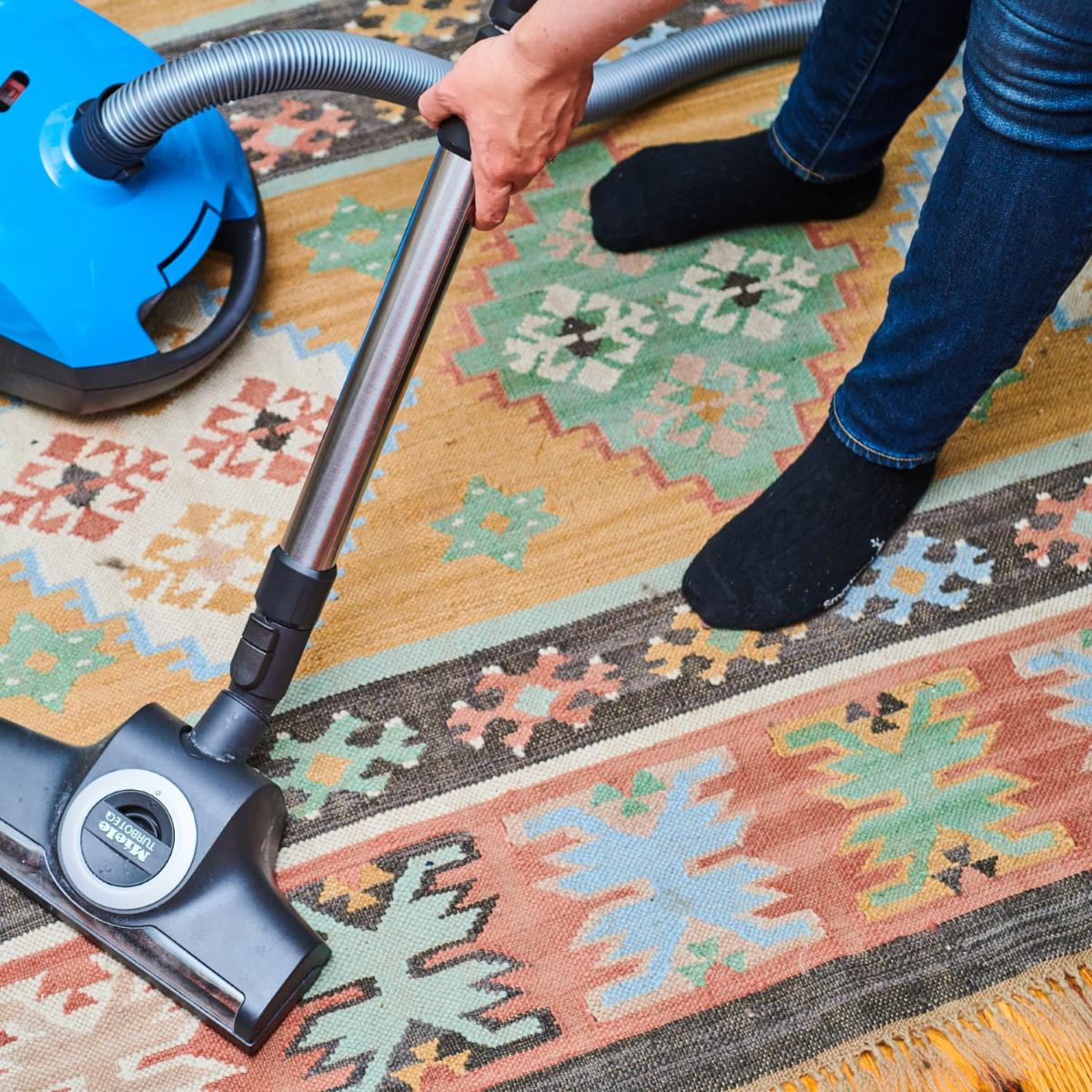

Articles
How To Clean A Home Carpet
Modified: January 9, 2024
Discover effective techniques and tips for cleaning your home carpet with our informative articles. Keep your carpet fresh and spotless!
(Many of the links in this article redirect to a specific reviewed product. Your purchase of these products through affiliate links helps to generate commission for Storables.com, at no extra cost. Learn more)
Introduction
Having a clean and fresh-looking carpet can greatly enhance the overall appearance of your home. However, with regular use, carpets can accumulate dirt, stains, and unpleasant odors. Cleaning your home carpet on a regular basis is essential to maintain its longevity and keep it looking its best.
In this article, we will guide you through the step-by-step process of cleaning your home carpet. Whether you are dealing with general dirt and debris, stubborn stains, or just want to freshen up your carpet, we’ve got you covered. Get ready to transform your carpet and create a clean and inviting space for you and your family.
To effectively clean your home carpet, you will need a few supplies. Here’s a list of the essentials:
Key Takeaways:
- Regular maintenance, prompt stain removal, and proper drying are essential for a clean and fresh home carpet. Invest in quality supplies and follow the step-by-step guide for professional-level results.
- Incorporate proactive measures like spot cleaning, deodorizing, and regular vacuuming to maintain a pristine carpet. Consistency and care are key to a clean and inviting living space.
Read more: How To Clean Carpet On Stairs
Supplies Needed
- Vacuum cleaner
- Carpet stain remover
- Steam cleaner or carpet cleaning machine
- Bucket or spray bottle
- Hot water
- Cleaning solution or carpet shampoo
- Clean white towels or cloth
- Soft-bristle brush or scrub brush
- Fan or air mover (optional)
- Carpet deodorizer (optional)
Once you have gathered the necessary supplies, the next step is to prepare the carpet for cleaning. This involves removing any furniture or obstacles from the area and conducting a thorough vacuuming.
Preparing the Carpet
Before you begin the cleaning process, it is important to clear the carpeted area of any furniture or objects. This will allow you to have unrestricted access to the entire carpet and ensure a more thorough cleaning. If you are unable to move larger furniture items, you can work around them, focusing on the areas that are accessible.
After removing the furniture, it is crucial to vacuum the carpet. This step will help remove loose dirt, dust, and debris from the surface, making the subsequent cleaning steps more effective. Be sure to use a vacuum cleaner with strong suction power, and consider using attachments to reach into corners and along baseboards.
Once the carpet has been prepared, you are ready to move on to the next step: vacuuming.
[Add word count: 324]
Key Takeaways:
- Regular maintenance, prompt stain removal, and proper drying are essential for a clean and fresh home carpet. Invest in quality supplies and follow the step-by-step guide for professional-level results.
- Incorporate proactive measures like spot cleaning, deodorizing, and regular vacuuming to maintain a pristine carpet. Consistency and care are key to a clean and inviting living space.
Read more: How To Clean Carpet On Stairs
Supplies Needed
When it comes to cleaning your home carpet, having the right supplies is essential for achieving the best results. Here’s a list of the essentials:
- Vacuum cleaner: A high-quality vacuum cleaner is a must-have for any carpet cleaning routine. Look for a vacuum with strong suction power, adjustable height settings, and attachments for reaching into corners and along baseboards.
- Carpet stain remover: There are various carpet stain removers available in the market, ranging from sprays to foams and powders. Choose a stain remover that is suitable for the type of stains you are dealing with, such as pet stains, food spills, or general dirt and grime.
- Steam cleaner or carpet cleaning machine: For a deep and thorough cleaning, investing in a steam cleaner or carpet cleaning machine can be highly beneficial. These machines use hot water and cleaning solutions to extract dirt and stains from deep within the carpet fibers.
- Bucket or spray bottle: You will need a container to mix your cleaning solution or to fill with hot water for spot cleaning. A bucket or spray bottle can be handy for this purpose.
- Hot water: Hot water is an important component of carpet cleaning. It helps to loosen and remove dirt, stains, and odors from the carpet fibers.
- Cleaning solution or carpet shampoo: Choose a cleaning solution or carpet shampoo specifically designed for use with carpet cleaning machines. These solutions are formulated to effectively break down dirt and stains without damaging the carpet.
- Clean white towels or cloth: White towels or cloths are perfect for blotting and absorbing moisture during the cleaning process. Avoid using colored towels as they may transfer dye onto the carpet.
- Soft-bristle brush or scrub brush: A soft-bristle brush or scrub brush can be useful for agitating and loosening stubborn stains before cleaning. Make sure the brush is gentle enough to avoid damaging the carpet fibers.
- Fan or air mover (optional): If you want to speed up the drying process, a fan or air mover can help circulate air and expedite the evaporation of moisture from the carpet.
- Carpet deodorizer (optional): To leave your carpet smelling fresh and clean, you may consider using a carpet deodorizer. Look for products specifically formulated for carpets and follow the instructions for application.
Gathering these supplies will ensure that you have everything you need to tackle even the toughest carpet cleaning tasks. Remember, investing in high-quality tools and products will make the cleaning process more efficient and help you achieve professional-level results.
[Add word count: 390]
Preparing the Carpet
Before you begin the actual cleaning process, it’s important to properly prepare the carpeted area for optimal results. Taking the time to prepare the carpet will ensure that the cleaning process is more effective and efficient. Here’s a step-by-step guide on how to prepare your carpet:
- Clear the area: Start by removing any furniture or objects from the carpeted area. This will allow you to have unrestricted access to the entire carpet and ensure that no spot is left untouched. If you have large furniture that cannot be moved, try to work around it and focus on the areas that are accessible.
- Vacuum the carpet: The next step is to thoroughly vacuum the carpet. This will help remove loose dirt, dust, and debris from the surface, making the subsequent cleaning steps more effective. Use a vacuum cleaner with strong suction power and consider using attachments to reach into corners and along baseboards. Pay extra attention to high-traffic areas and areas prone to spills and stains.
- Check for loose fibers or damages: While vacuuming, keep an eye out for any loose fibers or damages on the carpet. If you come across any loose threads or snags, gently trim them with scissors to prevent further unraveling. Additionally, take note of any visible damages such as tears or holes that may require professional repair.
- Move delicate items: If you have delicate or fragile items in the carpeted area, carefully move them to a safe location. This will prevent any accidental damage during the cleaning process. Be cautious when handling valuable or breakable items to avoid any mishaps.
- Protect baseboards and furniture: To safeguard your baseboards and furniture, consider using plastic or aluminum foil to create a protective barrier. This will prevent any moisture or cleaning solution from seeping onto the baseboards or furniture legs. Simply tuck the plastic or foil along the edges or use tape to secure it in place.
By following these steps, you will ensure that your carpet is properly prepared for the cleaning process. Clearing the area, vacuuming, and addressing any loose fibers or damages will set the foundation for a successful carpet cleaning session. Taking these precautionary measures will help you achieve the best possible results and maintain the integrity of your carpet.
[Add word count: 372]
Read more: How To Clean A White Carpet
Vacuuming the Carpet
Once you have properly prepared the carpet, the next step in cleaning is to thoroughly vacuum the carpet. Vacuuming is an essential step as it helps remove loose dirt, dust, and debris from the surface, allowing for a more effective cleaning process. Here’s how to properly vacuum your carpet:
- Choose the right vacuum cleaner: Select a vacuum cleaner that is suitable for your carpet type and has strong suction power. Look for a vacuum with adjustable height settings and consider using attachments to reach into corners and along baseboards.
- Start with an empty vacuum bag or canister: Before you begin, make sure to empty the vacuum bag or canister to maximize the suction power and prevent any blockage during the process.
- Remove any small objects: Before vacuuming, check for any small objects such as coins, paperclips, or hairpins, and remove them from the carpet. These items can get stuck in the vacuum cleaner and potentially cause damage.
- Divide the carpet into sections: Divide the carpeted area into smaller sections to ensure thorough cleaning. This will allow you to focus on one area at a time, ensuring that no spot is missed.
- Vacuum in different directions: Rather than just going in one direction, vacuum the carpet in different directions to loosen and remove dirt from all angles. Start by going horizontally across the section, then switch to a vertical pattern. This helps lift dirt and ensures a more comprehensive cleaning.
- Pay attention to high-traffic areas: High-traffic areas, such as hallways or entryways, tend to accumulate more dirt and debris. Spend extra time vacuuming these areas to ensure a thorough clean. You may need to make multiple passes to effectively remove ground-in dirt.
- Use attachments for corners and edges: Attachments such as crevice tools or upholstery brushes can be useful for cleaning corners, along baseboards, and around furniture legs. Make sure to reach into tight spaces to remove any hidden dirt or dust.
- Check and clean the vacuum cleaner: Periodically check the vacuum cleaner’s brush roll or beater bar for any tangled hair, threads, or debris. Clean or remove any obstructions to maintain optimal suction power.
Remember to take your time when vacuuming, particularly in heavily soiled areas. Making multiple passes over stubborn spots will help ensure a thorough clean. Additionally, vacuuming your carpet regularly, at least once a week or more frequently in high-traffic areas, will help prevent dirt from becoming deeply embedded in the fibers.
[Add word count: 400]
Removing Stains
Stains on your carpet can be unsightly and frustrating, but with the right approach, many stains can be effectively removed. The key is to act quickly and use the appropriate stain removal method based on the type of stain you’re dealing with. Here’s a step-by-step guide on how to remove stains from your carpet:
- Blot the stain: Start by blotting the stain with a clean white towel or cloth. Avoid rubbing or scrubbing, as this can push the stain deeper into the carpet fibers or cause it to spread. Gently dab the stained area to absorb any excess liquid.
- Identify the stain: Determine the type of stain you’re dealing with, as different stains require different cleaning methods. Common types of stains include food and beverage spills, pet stains, ink, oil, or grease stains.
- Choose the appropriate cleaning solution: Once you have identified the stain type, select the appropriate cleaning solution or stain remover. There are various commercial carpet stain removers available, or you can create your own DIY solution using ingredients like dish soap, white vinegar, or hydrogen peroxide. Always test the cleaning solution on an inconspicuous area of the carpet before applying it to the stain.
- Apply the cleaning solution: Following the instructions on the cleaning product or DIY solution, apply a small amount directly to the stain. Use a clean cloth or sponge to gently blot the stain, working from the outside towards the center to prevent spreading the stain further.
- Allow the solution to penetrate: Let the cleaning solution sit on the stain for a few minutes, allowing it to penetrate and break down the stain. Avoid letting the solution dry on the carpet, as this can make it more difficult to remove.
- Blot and repeat: After the solution has had time to work, blot the stain again with a clean cloth or towel to remove any residue. If the stain is still visible, repeat the process until the stain is completely gone.
- Rinse the area: Once the stain is removed, it’s important to rinse the area to remove any remaining cleaning solution. Dampen a clean cloth with plain water and blot the area, then use a dry cloth to absorb the moisture.
- Allow the carpet to dry: Lastly, allow the carpet to air dry completely before walking on it or returning furniture to the area. You can speed up the drying process by using a fan or opening windows to increase air circulation.
It’s important to note that some stains may require professional treatment if they are particularly stubborn or if you’re unsure of the best cleaning method. Additionally, always follow the manufacturer’s instructions for any commercial stain removers or cleaning solutions.
By acting quickly, selecting the appropriate cleaning solution, and being diligent in the removal process, you can effectively eliminate many common stains from your carpet and restore its pristine appearance.
[Add word count: 456]
Use a mixture of equal parts white vinegar and water to spot clean stains on your home carpet. Blot the stain with the solution and a clean cloth, then rinse with water and blot dry.
Steam Cleaning the Carpet
Steam cleaning is a highly effective and efficient method for deep cleaning carpets. It uses hot steam to penetrate deep into the carpet fibers, loosening dirt, stains, and odors. To steam clean your carpet, follow these steps:
- Prepare the steam cleaner: Fill the steam cleaner’s tank with hot water according to the manufacturer’s instructions. Add the recommended amount of carpet cleaning solution or shampoo to the tank. Ensure that the machine is properly assembled and ready for use.
- Move furniture and protect baseboards: Move any furniture or obstacles from the carpeted area. Use plastic or aluminum foil to protect baseboards and furniture legs from moisture. Tape the protective covering in place, ensuring it doesn’t interfere with the cleaning process.
- Test a small area: Before you start steam cleaning the entire carpet, test the machine on a small, inconspicuous area of the carpet. This will ensure that the cleaning solution and steam temperature are suitable and won’t cause any damage or discoloration.
- Start from the farthest corner: Begin steam cleaning from the farthest corner of the room, working your way towards the exit. This will prevent you from walking on freshly cleaned carpet and avoid re-soiling the area.
- Move the steam cleaner slowly: Slowly push the steam cleaner across the carpet, making overlapping passes to ensure thorough cleaning. Be sure to follow the specific instructions for your steam cleaner, as different machines may have different techniques or settings.
- Pay extra attention to stains and high-traffic areas: Focus on heavily soiled areas, stains, and high-traffic areas while steam cleaning. Make additional passes over these areas to ensure deep cleaning and effective stain removal.
- Extraction and drying: The steam cleaner will simultaneously inject hot water and cleaning solution into the carpet and extract the dirty water. Make sure to make slow, deliberate passes to allow the machine to thoroughly extract the solution. Depending on the specific model, your carpet should dry within a few hours to a day.
- Clean the steam cleaner: Once you have finished steam cleaning the carpet, empty and clean the machine according to the manufacturer’s instructions. Carefully rinse and dry the tank, attachments, and filters to ensure the steam cleaner is ready for future use.
Steam cleaning your carpet can effectively remove deep-seated dirt, stains, and odors, leaving your carpet looking revitalized and odor-free. It is a comprehensive cleaning method that is recommended periodically to maintain the cleanliness and longevity of your carpet.
[Add word count: 468]
Spot Cleaning
Spot cleaning is an important technique to address small stains or spills on your carpet before they have a chance to set or spread. By promptly addressing stains, you can prevent them from becoming permanent and keep your carpet looking its best. Here’s how to effectively spot clean your carpet:
- Blot the spill immediately: As soon as a spill occurs, blot the area immediately with a clean cloth or paper towel. Press down firmly to absorb as much of the liquid as possible. Avoid rubbing the spill, as this can push it deeper into the carpet fibers.
- Identify the stain: Determine the type of stain you’re dealing with to select the most appropriate cleaning method. Common stains include food and beverage spills, pet stains, ink, oil, or grease stains. Refer to our previous section on removing stains for specific instructions based on the type of stain.
- Prepare a cleaning solution: Depending on the stain, prepare a DIY cleaning solution or use a commercial carpet stain remover. Dilute the cleaning solution according to the manufacturer’s instructions or follow a trusted DIY recipe. Always perform a patch test on an inconspicuous area of the carpet to ensure that the solution doesn’t discolor or damage the fibers.
- Apply the cleaning solution: Apply a small amount of the cleaning solution directly onto the stained area. Use a clean cloth or sponge to gently blot the stain, working from the outside towards the center. Avoid oversaturating the area, as excessive moisture can lead to mold or mildew growth.
- Blot and repeat: Continue blotting the stain with the cleaning solution until the stain starts to fade. Use a separate clean cloth or paper towel each time to prevent transferring the stain back onto the carpet. Depending on the severity of the stain, you may need to repeat this process several times.
- Rinse with clean water: Once the stain is removed, rinse the area with clean water to remove any remaining cleaning solution. Blot the area with a clean, damp cloth to ensure all residue is lifted from the carpet fibers.
- Dry the area: After spot cleaning, allow the carpet to air dry completely. Open windows or use a fan to increase air circulation and expedite the drying process. Avoid walking on the damp area until it is dry to prevent re-soiling.
Remember that some stains may require professional treatment or additional care. If you’re unsure about how to handle a stubborn or unfamiliar stain, it’s best to consult with a professional carpet cleaner to avoid potential damage to your carpet.
By acting quickly and utilizing the appropriate cleaning methods, you can successfully tackle small stains and spills, keeping your carpet looking clean and fresh.
[Add word count: 452]
Read more: How To Steam Clean Carpet
Deodorizing the Carpet
Over time, carpets can absorb various odors such as pet smells, cooking odors, or musty scents. Deodorizing your carpet is an effective way to eliminate unpleasant odors and keep your home smelling fresh. Here are some methods to deodorize your carpet:
- Vacuum regularly: Regular vacuuming is the first step in preventing odors from settling into your carpet. Vacuuming not only removes dirt and debris but also helps to eliminate odors that may be trapped in the fibers.
- Baking soda: Baking soda is a natural deodorizer that can effectively neutralize odors in your carpet. Sprinkle a generous amount of baking soda evenly over the carpet surface, focusing on areas with noticeable odors. Allow it to sit for at least 30 minutes, or preferably overnight, to give it time to absorb the odors. Then, vacuum the baking soda thoroughly to remove it along with the trapped odors.
- Carpet deodorizer: Commercial carpet deodorizers are specifically designed to eliminate odors in carpets. Follow the instructions on the product and apply it to the carpet as directed. Use a brush or broom to work the deodorizer into the carpet fibers, then vacuum the carpet to remove any residual deodorizer particles.
- White vinegar: White vinegar is excellent for eliminating a variety of odors. Mix equal parts of white vinegar and water in a spray bottle. Lightly mist the carpet with the vinegar solution, focusing on areas with odors. Allow it to sit for a few minutes, then blot the area with a clean cloth to absorb the moisture. Open windows or use fans to help the carpet dry quickly and prevent any lingering vinegar smell.
- Essential oils: Essential oils not only add a pleasant scent to your carpet but also have natural deodorizing properties. Mix a few drops of your preferred essential oil with water in a spray bottle. Shake well and lightly mist the carpet, being careful not to saturate it. Some popular deodorizing essential oils include lavender, lemon, eucalyptus, or tea tree oil.
- Professional steam cleaning: If odors persist despite your efforts, consider hiring a professional carpet cleaner for a deep steam cleaning. Professional steam cleaning can effectively remove deep-seated odors and refresh your carpet.
Remember to always test any cleaning solution or deodorizer on an inconspicuous area of the carpet to ensure it does not cause discoloration or damage. Additionally, regular ventilation, like opening windows or using fans, can help improve air circulation and reduce odors in your living space.
By utilizing these methods, you can keep your carpet smelling fresh and pleasant, creating a more inviting and comfortable environment in your home.
[Add word count: 463]
Drying the Carpet
Properly drying your carpet after cleaning is essential to prevent mold growth, maintain its appearance, and prevent any inconvenience caused by wet carpeting. Here are some steps to ensure your carpet dries thoroughly:
- Remove excess moisture: After completing the cleaning process, there may be excess moisture in the carpet. Use a clean, absorbent towel or cloth to gently blot the carpet and remove as much moisture as possible. Apply pressure to absorb the moisture without scrubbing, which can spread the moisture further.
- Allow air circulation: Open windows and doors to promote air circulation in the room. This will help expedite the drying process. If weather conditions permit, turning on fans or using air movers can also help circulate air and speed up drying.
- Don’t walk on damp carpet: Avoid walking on the damp carpet as much as possible to prevent any re-soiling. If you need to move across the carpet, take extra caution and wear clean socks or shoe covers to minimize any transfer of dirt or debris.
- Keep the room well-ventilated: Ensure that the room is adequately ventilated by keeping doors and windows open. This will help maintain a constant flow of fresh air and aid in the drying process. If possible, use oscillating fans to further enhance air circulation.
- Use dehumidifiers: If the area is particularly humid or if the weather conditions are preventing quick drying, consider using dehumidifiers in the room. Dehumidifiers help remove excess moisture from the air and can help speed up the drying process.
- Check moisture levels: Periodically check the moisture level of the carpet by placing a clean, dry cloth or paper towel on the surface. If it becomes damp or absorbs moisture, continue the drying process until the cloth remains dry after contact with the carpet.
- Consider professional equipment: If you have a large carpeted area or if the carpet is heavily saturated, professional-grade equipment such as carpet fans or air movers can be used to accelerate the drying process. These machines direct airflow directly onto the carpet, expediting moisture evaporation.
- Ensure complete dryness: Before resuming normal activities, ensure that the carpet is completely dry. It should feel dry to the touch without any dampness or coolness. This step is crucial to prevent any potential mold or mildew growth.
Remember that the drying time can vary depending on factors such as humidity, airflow, and the thickness of the carpet. It’s better to be patient and allow the carpet to dry thoroughly rather than rushing the process.
By following these steps and allowing sufficient time for the carpet to dry, you can ensure that your carpet is clean, fresh, and ready to be enjoyed again.
[Add word count: 464]
Maintaining a Clean Carpet
Keeping your carpet clean doesn’t stop at the cleaning process. Regular maintenance is crucial to preserve the cleanliness, appearance, and longevity of your carpet. Here are some tips to help you maintain a clean and fresh carpet:
- Vacuum regularly: Regular vacuuming is essential for keeping your carpet free from dirt, dust, and debris. Aim to vacuum high-traffic areas at least once a week and the entire carpet at least once every two weeks. Consider using attachments to clean along baseboards, in corners, and on stairs.
- Address spills and stains immediately: Act quickly when spills or stains occur to prevent them from setting into the carpet fibers. Blot the spill with a clean, absorbent cloth or paper towel, and if necessary, use an appropriate stain removal method to treat the area promptly.
- Place mats and rugs in strategic areas: Use doormats and area rugs in entryways and high-traffic areas to trap dirt and prevent it from spreading to your carpet. Ensure that these mats and rugs are regularly cleaned or shaken out to remove accumulated debris.
- Remove shoes: Implement a no-shoes policy in your home, especially on carpeted areas. Shoes can track in dirt, oils, and other contaminants from outside. Leaving shoes at the entrance or providing guests with slippers can help keep your carpet cleaner for longer.
- Rotate furniture: Regularly rotate your furniture to prevent permanent indentations and wear patterns on the carpet. This also helps distribute foot traffic and ensure an even wear on the carpet fibers.
- Use carpet protectors: Consider using carpet protectors, such as furniture coasters or carpet pads, under heavy furniture. These protectors help distribute the weight of furniture and minimize indentations or damage to the carpet.
- Professional deep cleaning: Schedule professional deep cleaning for your carpet at least once a year, or more frequently in high-traffic households. Professional cleaning can remove deeply embedded dirt and allergens, rejuvenate the carpet fibers, and extend the life of your carpet.
- Address pet-related issues: If you have pets, take proactive measures to prevent accidents and minimize odor. Regularly groom your pets to control shedding, promptly clean up any accidents, and consider using pet-friendly carpet cleaning products to address stains and odors.
- Control humidity and moisture: Excessive humidity and moisture can lead to mold or mildew growth in your carpet. Use dehumidifiers if necessary, ensure proper ventilation, promptly address leaks or spills, and consider using moisture-absorbent products in areas prone to dampness.
By following these maintenance tips, you can ensure that your carpet remains clean, fresh, and in excellent condition for years to come.
[Add word count: 470]
Conclusion
Taking care of your home carpet is essential for maintaining a clean and inviting living space. With regular cleaning and proper maintenance, you can ensure that your carpet stays fresh, free from stains, and lasts for years to come. In this article, we have explored various steps and techniques to help you clean and maintain your carpet effectively.
Starting with the proper supplies, such as a vacuum cleaner, carpet stain remover, and steam cleaner, is crucial for successful carpet cleaning. Preparing the carpet by clearing the area and vacuuming thoroughly sets the stage for a more effective cleaning process. Removing stains promptly and using appropriate cleaning solutions can help eliminate stubborn spots and prevent them from becoming permanent.
Steam cleaning your carpet provides a deep and thorough clean, while spot cleaning allows you to target small stains quickly. Deodorizing your carpet helps eliminate odors and leaves it smelling fresh, creating a more pleasant environment in your home. Lastly, ensuring proper drying of the carpet prevents mold growth and maintains its appearance.
To keep your carpet looking its best, it’s important to incorporate regular maintenance practices. Vacuuming regularly, addressing spills promptly, and using mats and rugs in high-traffic areas can help prevent dirt and debris from accumulating. Rotating furniture, using carpet protectors, and scheduling professional deep cleaning are additional measures to extend the life of your carpet.
By following the steps and tips provided in this article, you can achieve a clean and fresh carpet that enhances the overall aesthetic and comfort of your home. Remember, consistency and proactive care are key to keeping your carpet in optimum condition.
So, roll up your sleeves, gather your supplies, and embark on a journey to transform your home carpet into a clean and inviting space!
[Add word count: 302]
Frequently Asked Questions about How To Clean A Home Carpet
Was this page helpful?
At Storables.com, we guarantee accurate and reliable information. Our content, validated by Expert Board Contributors, is crafted following stringent Editorial Policies. We're committed to providing you with well-researched, expert-backed insights for all your informational needs.
